How to Remove Ambiguity in Infinite Limits
Let’s delve into the intricate process of resolving ambiguities inherent in infinite limits. The complexities of infinity in calculus often manifest in indeterminate forms that cannot be directly solved. Among these are the perplexing \(0×∞\) and \(\frac{∞}{∞}\) types. Here’s a detailed guide to navigate through such ambiguities, often to transform them into a \(\frac{0}{0}\) indeterminate form, which is amenable to techniques such as L’Hôpital’s Rule.
[include_netrun_products_block from-products="product/6-south-carolina-sc-ready-grade-3-math-practice-tests/" product-list-class="bundle-products float-left" product-item-class="float-left" product-item-image-container-class="p-0 float-left" product-item-image-container-size="col-2" product-item-image-container-custom-style="" product-item-container-size="" product-item-add-to-cart-class="btn-accent btn-purchase-ajax" product-item-button-custom-url="{url}/?ajax-add-to-cart={id}" product-item-button-custom-url-if-not-salable="{productUrl} product-item-container-class="" product-item-element-order="image,title,purchase,price" product-item-title-size="" product-item-title-wrapper-size="col-10" product-item-title-tag="h3" product-item-title-class="mt-0" product-item-title-wrapper-class="float-left pr-0" product-item-price-size="" product-item-purchase-size="" product-item-purchase-wrapper-size="" product-item-price-wrapper-class="pr-0 float-left" product-item-price-wrapper-size="col-10" product-item-read-more-text="" product-item-add-to-cart-text="" product-item-add-to-cart-custom-attribute="title='Purchase this book with single click'" product-item-thumbnail-size="290-380" show-details="false" show-excerpt="false" paginate="false" lazy-load="true"]
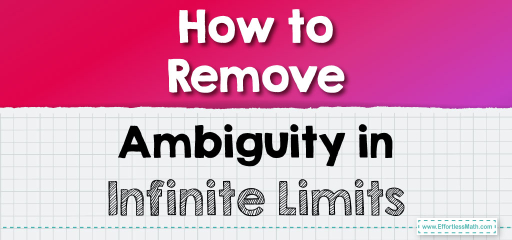
Step-by-Step Guide to Remove Ambiguity in Infinite Limits
Here is a step-by-step guide to removing ambiguity in infinite limits:
Step 1: Understanding the Ambiguity of Infinity
Firstly, grasp that the expressions involving infinity (\(∞\)) are not definite numbers but represent the idea of unbounded increase or decrease. Ambiguous forms like \(0×∞\) and \(\frac{∞}{∞}\) require a strategy that transforms them into a solvable structure, typically the \(\frac{0}{0}\) indeterminate form.
Step 2: Establishing General Principles for Infinity
Assume that \(lim_{x→c}f(x)=±∞\) and \(lim_{x→c}g(x)=L\), where \(L\) is a real number and not zero. Here, we have the following conditions:
- For \(L>0\), \(lim_{x→c}[f(x)×g(x)]=±∞\) and \(lim_{x→c}[\frac{f(x)}{g(x)}]=±∞\).
- For \(L<0\), \(lim_{x→c}[f(x)×g(x)]=∓∞\) and \(lim_{x→c}[\frac{f(x)}{g(x)}]=∓∞\).
- Addition or subtraction with \(±∞\) retains the infinity.
If both functions approach positive infinity, then the product and sum also tend to positive infinity.
Step 3: Resolving the \(0×∞\) Indeterminate Form
When L is zero, we face the \(0×∞\) ambiguity. To address this, we aim to rewrite the expression to create a \(\frac{0}{0}\) form. Here’s how:
Transform \(lim_{x→c}[f(x)×g(x)]\) into \(lim_{x→c}\)\([\frac{g(x)}{(\frac{1}{f(x)})}]\). Since \(\frac{real \ number}{∞}=0\), this transformation can yield a \(\frac{0}{0}\) scenario, which is more manageable.
Step 4: Addressing the \(\frac{∞}{∞}\) Indeterminate Form
When confronting the \(\frac{∞}{∞}\) form, we apply a similar tactic by inverting both the numerator and the denominator, transforming \(lim_{x→c}[f(x)×g(x)]\) into \(lim_{x→c}\)\([\frac{\frac{1}{g(x)}}{(\frac{1}{f(x)})}]\), thus aiming for a \(\frac{0}{0}\) condition.
Step 5: Simplification to Escape Infinity Ambiguity
Simplify the expressions where possible:
- Factorize polynomials to cancel common terms.
- Divide each term in a rational function by the highest power of \(x\) in the denominator to normalize the limit expression.
Step 6: Applying L’Hôpital’s Rule
Once a \(\frac{0}{0}\) indeterminate form is achieved through the steps above, L’Hôpital’s Rule can be applied. This involves taking the derivative of the numerator and the derivative of the denominator and then re-evaluating the limit.
Step 7: Continuous Evaluation and Transformation
The process might need to be iterated: simplification, applying L’Hôpital’s Rule, or further transformation to expose a \(\frac{0}{0}\) form may need to be performed multiple times.
Final Word:
By methodically transforming indeterminate forms involving infinity into the more tractable \(\frac{0}{0}\) form and employing strategic calculus tools, the veil of ambiguity is lifted, allowing for the precise determination of limits at infinity. This mastery over the ethereal concept of infinity is a testament to the logical structure and elegance of mathematical principles, even when they stretch into the boundless.
Related to This Article
More math articles
- How to Choose the Best Backup Software Solution for School Districts?
- Rounding Rally: Simplifying Decimals to the Nearest Whole
- 3rd Grade PSSA Math Worksheets: FREE & Printable
- Best Laptops for Back to School
- 3rd Grade Common Core Math Worksheets: FREE & Printable
- TExES Core Subjects Math- Test Day Tips
- 5 Bеѕt саlсulаtоrѕ fоr ѕtаtiѕtiсѕ
- FREE 4th Grade FSA Math Practice Test
- CHSPE Math Practice Test Questions
- Studying Math Can Foster Analytical Skills

















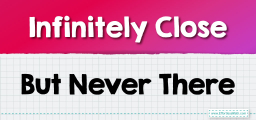
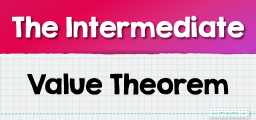
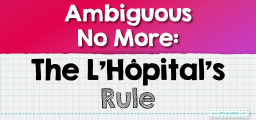
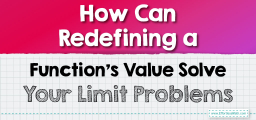
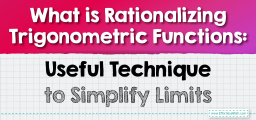
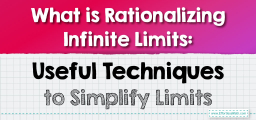
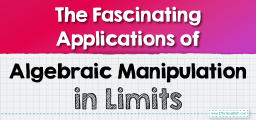
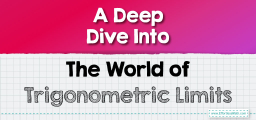

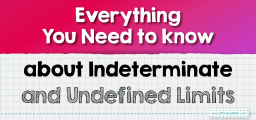
What people say about "How to Remove Ambiguity in Infinite Limits - Effortless Math: We Help Students Learn to LOVE Mathematics"?
No one replied yet.